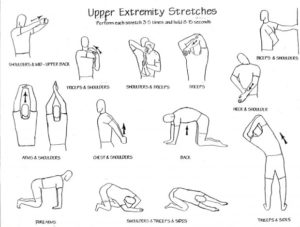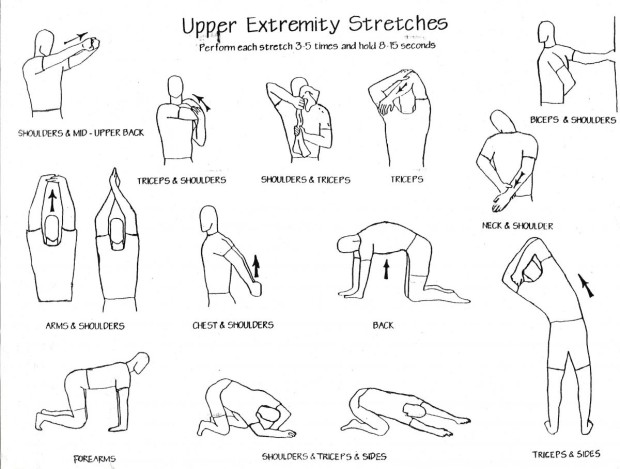Stretching: When, Why and How.
Are you still doing static stretching before activity? Stop. Chances are this idea was drilled into you in childhood sports teams or through your highschool PE class. Although the intentions are well, research suggests this to be an inadequate form of warm up which may actually decrease muscle strength – termed “stretch induced strength loss” – and may increase chances for injury. A proper warm up should rather consist of dynamic stretching. Dynamic stretching is generally slow to moderate paced, controlled movements similar to those you will be performing during your exercise.

“So, should I stop static stretching as a whole?” No, that is not necessary. Static stretching can be useful as a post exercise activity, to help reduce localized pain, and to slightly increase your range of motion (ROM). If your intentions are to increase ROM, studies suggest 15-30 seconds is the ideal amount of time to do so.

PNF (Proprioceptive Neuromuscular Facilitation) stretching has also been shown to be very effective for increasing ROM through stretching. This is done with contract-relax techniques, using submaximal contractions of 20% contraction strength for 7-10 seconds, followed by 7-10 seconds of relaxation (but maintaining the stretched position). PNF stretching is thought to show its ROM gains through a possible neurologic phenomenon. This technique can be applied across most joints and be incorporated with the static stretches you’re already doing. Here is a video demonstrating self PNF stretching specifically for the hip flexors (any cyclists out there?) but please note, this can be applied to any muscle group in the body.
An easy example would be to extend your wrist as far as you’re comfortable with using your other hand to guide the stretch, many will be familiar with this stretch by this point BUT we’re not done! Now, once in this stretched position, we’re going to gently push our fingers into our guiding hand for 7 seconds. Now relax, hold this for 7-10 seconds, now repeat.

Hopefully this clears up some misconceptions around stretching, and the ‘when, why and how’ around it.
Happy Trails,
Brock Anderson – RMT

